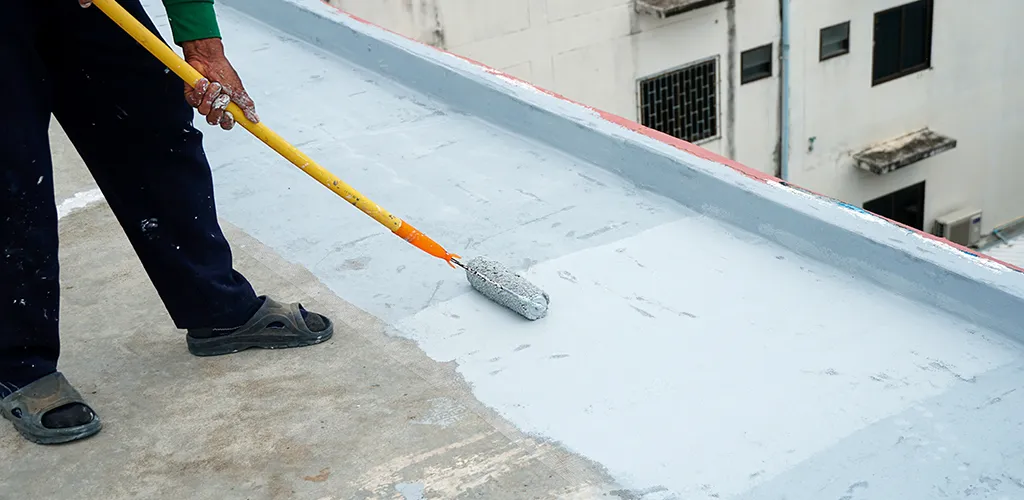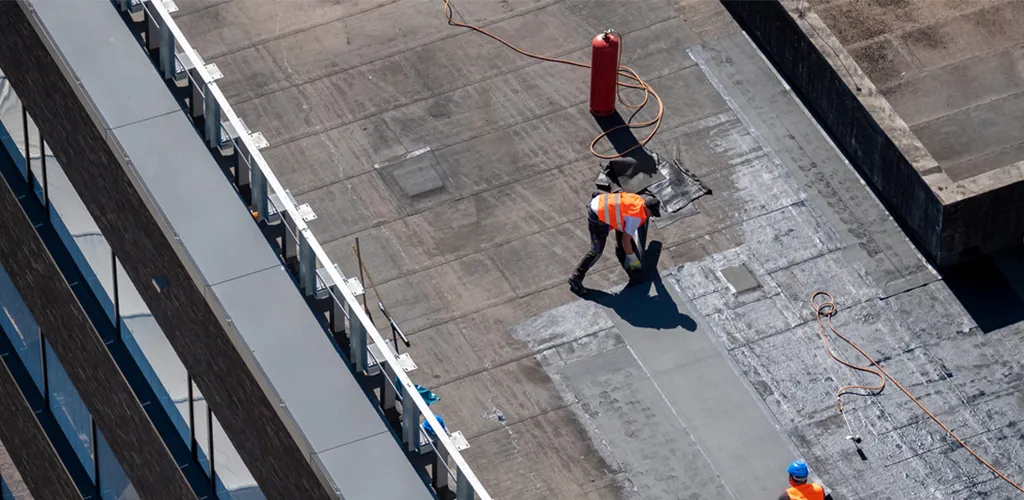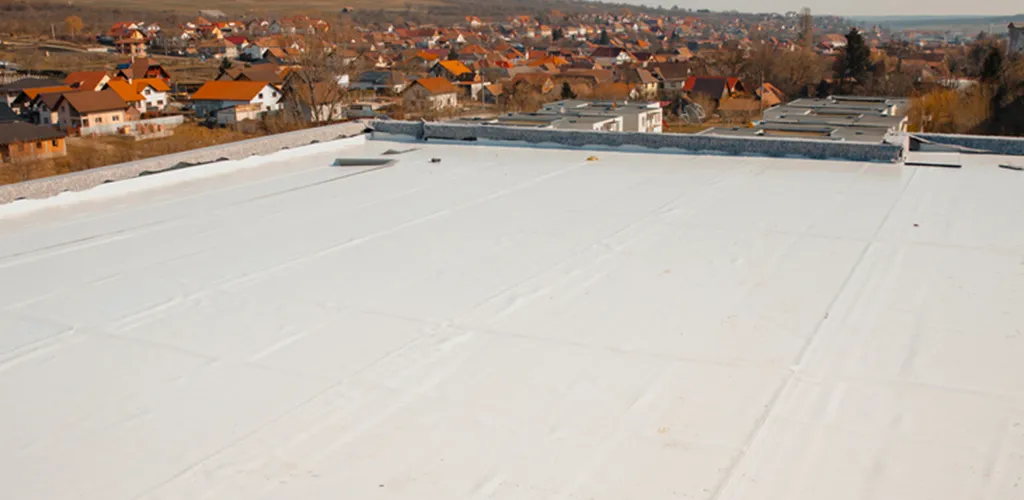Roof Waterproofing is the most significant step in the roof installation process because it protects everything you keep inside your home or office.
The end of summer is the beginning of all autumn planning and preparation. And while some people cannot wait for the first rain after a hot summer, the idea that stagnant water damages our roofs is not that much fun!
It is time to seal the roof with the right roof coating products to prevent damage and keep the ceiling in good condition for years to come!
In this guide, we have covered everything you need to know about roofing! So without further ado, let us dive in.
What is Roof Waterproofing?

Roof waterproofing is an additional protective layer added to the roof that prevents water from penetrating the house and rotting walls and stanchions. There are many causes for roof leaks, and inadequate roof waterproofing treatment is at the top of this list.
Why Do You Need Roof Waterproofing Treatment?
When living in the equatorial zone or the monsoon areas of Pakistan, showers are a daily occurrence.
When you do not opt for waterproofing, frequent storms can become a problem for your rooftops for many reasons. A few of them are here:
- Roof damage can be dangerous if left unattended for extended periods. Continuous moisture and mold growth can destroy the girders over time, and the roof can collapse in your area.
- Wall and ceiling scale stains are harmless but unsightly and very difficult to remove.
- Moldy and mossy exterior walls can give your home a hut in the woods.
- When the monsoon becomes sporadic and unpredictable and lasts until winter, roofs are susceptible to rapid water damage.
- Prolonged exposure to direct sunlight and heat, not only in summer but also throughout the year.
- If not repaired and remedied quickly, cracks caused by prolonged exposure to environmental changes can widen and weaken the entire roof surface. Gaps between fixtures such as roof doorframes and concrete become possible points for roof leaks.
What Factors Should You Consider for Roof Waterproofing?

While there are many types of waterproofing, you need the best one for your application. Look for the following properties before you choose the appropriate roof waterproofing treatment for your commercial roofing.
Compatibility
Pay attention to the type of coating material existing on your single-layer roof to avoid costly damage. For example, applying urethane to acrylic elastomers can cause re-emulsification. Any surface covered with silicone will interfere with the adhesion of the waterproofing membrane.
Sunlight Resistance
Unless you have trees above your building, the waterproofing membrane is a stable and resistant way to protect ceilings from ultraviolet (UV) rays. Otherwise, it will lose its power when the sun shines in.
Elongation
Your roof waterproofing membrane should be able to stretch to accommodate movement, especially if you have a steel tower or building, and cover any cracks that may develop over time in concrete works. Manufacturers specify elongation as a percentage. If the material has an expansion rate of 150%, it can stretch up to 1.5 times its natural shape.
Breathability
Over-effective waterproofing can trap water inside your building in the event of an accidental moisture leak. Look for a diaphragm that prevents water from passing through it but allows steam to escape.
Tear Resistance
Even if your material has a high percentage of elongation, it can tear under considerable force. Your waterproofing membrane should be durable enough to withstand high winds and rain.
Abrasion Resistance
In addition to tearing due to impact forces, the material must also resist wear from everyday use. You can determine a material’s resistance to abrasion when workers place nails, screws, and heavy objects on it during construction. If rough items can tear it, the membrane will leak your commercial property.
Chemical stability
Membranes must resist chemicals from adjacent industrial areas and falling debris. If the membrane is not chemically inert, it can decompose in the presence of soil and building materials.
Geometry
The waterproof membrane must have the flexibility to fit your uniquely shaped roof. A liquid membrane would work best in this case as it can take on any shape. On the other hand, the sheet membrane can warp and wrinkle, leaving gaps between the membrane and the lower layer.
What are the Steps for Building Waterproofing?

The first step in waterproofing a roof is cleaning the substrate through pressure washing. Proper cleaning eliminates so-called bond breakers. Additionally, this will expose details needing treatment that may not be visible at first sight.
Following cleaning, dry out the surface using air blowers or torches, and apply primers. It helps to block bleeding of the bituminous oils from the existing roof through the liquid membrane.
The third step is the treatment of details. Details such as interior and exterior corners, including metal flashing terminations, wall to floor type corners, and penetrations (vents, pipes, or drains) are typically pre-treated with reinforcing fabric installed into the liquid layer with a flashing sealant.
Finally, the application of the liquid membrane onto the roof. Method of application, substrate porosity, temperature, and waste are external factors that may influence roofing repairs.
How Often Should You Opt for Roof Waterproofing Treatment?
For roofs to qualify for seasonal influences, they must remain waterproof for at least five years without any form of maintenance other than routine cleaning of the drainpipes, downspouts, and gutters.
How Much Does it Cost to Waterproof a Roof in Pakistan?
One thing that people often wonder is how much does it cost to handle leaky roofs in Pakistan? To answer simply, it depends. Many different factors can be used to evaluate the cost of waterproofing roof, for example, chemical costs, labor costs, option costs, maintenance, hidden costs, etc.
At Ressichem, we do not charge our customers with additional or hidden fees. We ensure to provide our customers with affordable roof waterproofing treatment solutions that fits every pocket and last longer.
What are more?
Six DIY Hacks for Waterproof Roof Coating!
- Remove all dead leaves and branches
- Replace lost, rolled up, or damaged roofing
- Add insulation to your attic
- Cover seams with adhesive tape
- Add water repellent
- Add thermal adhesive tapes

